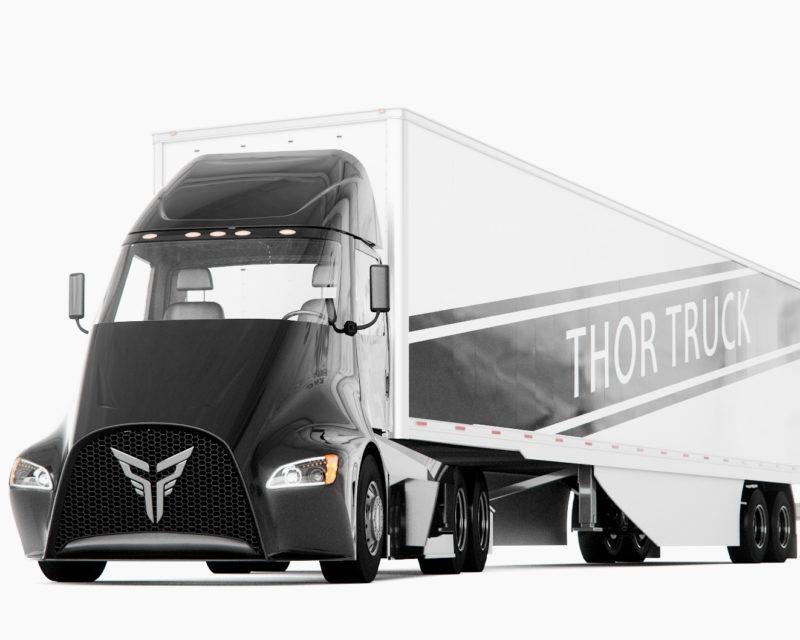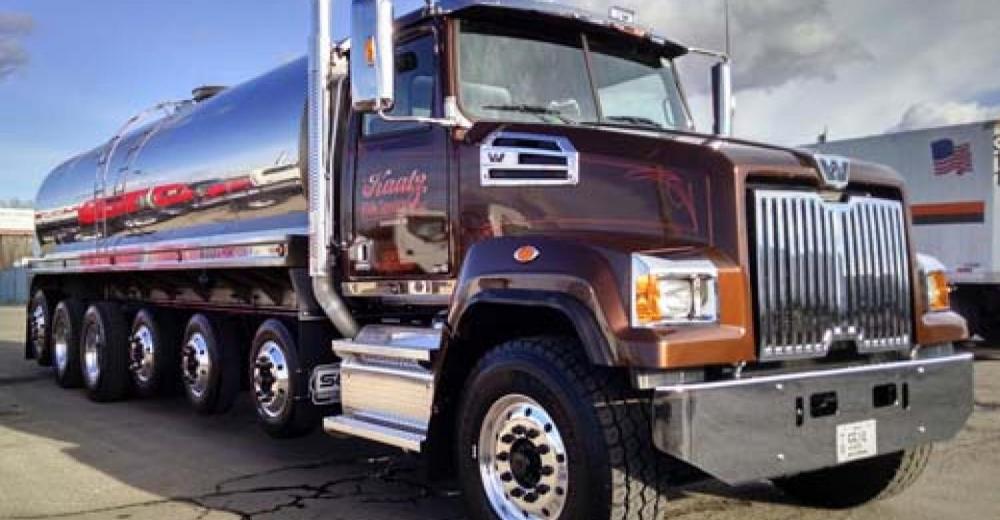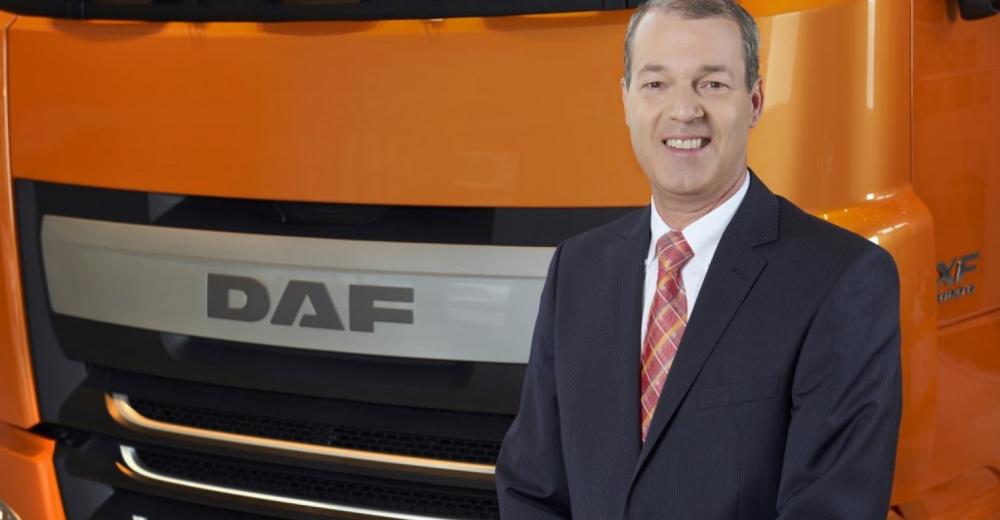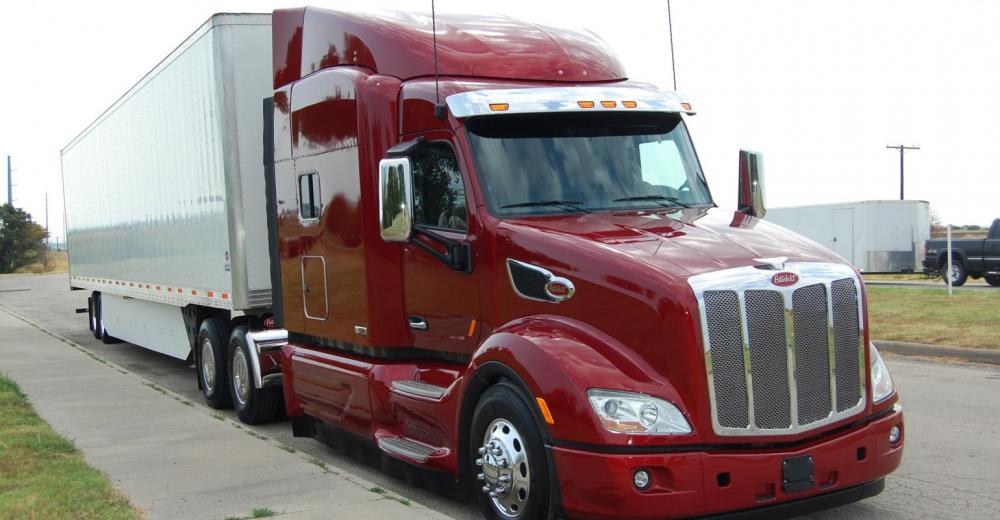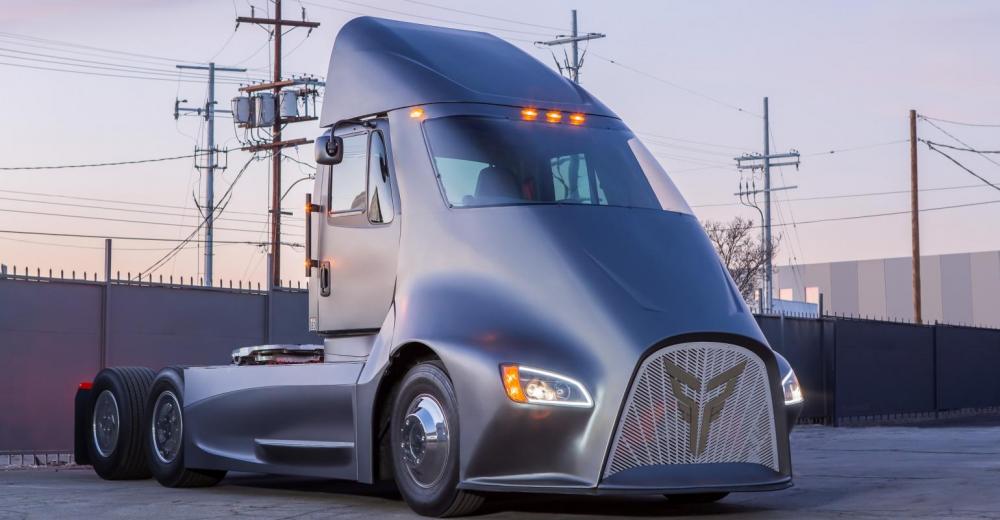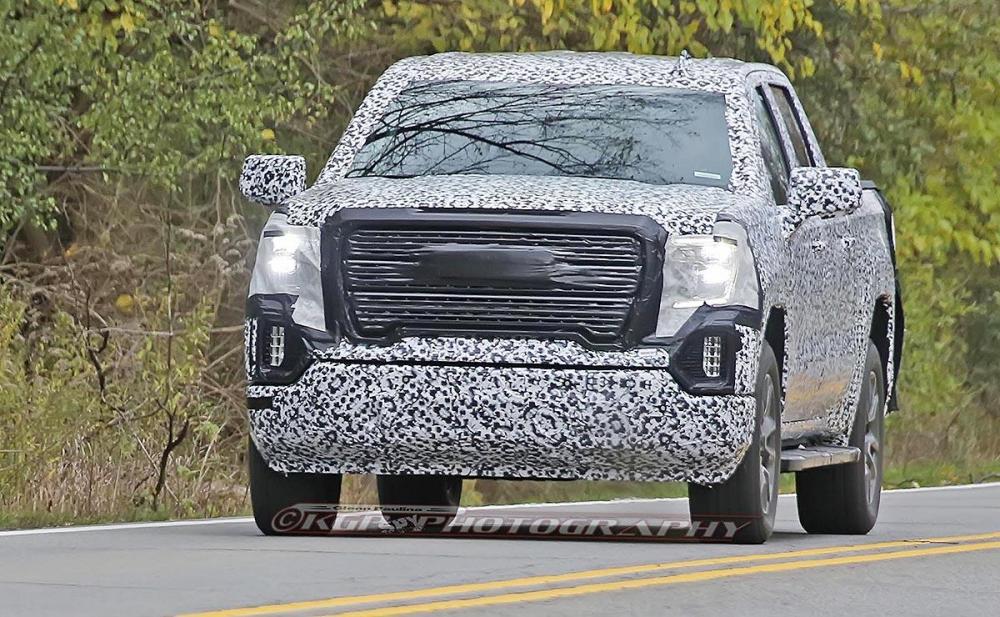
kscarbel2
Moderator-
Posts
18,883 -
Joined
-
Days Won
114
Content Type
Profiles
Forums
Gallery
Events
Blogs
BMT Wiki
Collections
Store
Everything posted by kscarbel2
-
Navistar Posts Higher Results in Fourth Quarter, Fiscal Year Transport Topics / December 19, 2017 CEO Troy Clarke Sees Momentum Carrying Into 2018 Navistar International Corp. reported net income and revenue rose in its fiscal-year fourth quarter and for the full year. “Our 2017 was a breakthrough year, as we returned to profitability and grew our market share 1.5 points,” Navistar Chairman and CEO Troy Clarke said. “These results were driven by stronger sales, our steady investment in the industry’s newest product lineup, early results from our strategic alliance with Volkswagen Truck & Bus and our ongoing focus on cost.” Quarterly net income for the period ended Oct. 31 was $135 million, or $1.36 per diluted share, compared with a net loss of $34 million, or 42 cents, in the 2016 period. Revenues in the quarter increased 26% to $2.6 billion compared with fourth-quarter 2016. The revenue increase largely was driven by a 31% increase in the company’s Classes 6-8 trucks and bus segment volumes in the United States and Canada. For the fiscal year, Navistar reported net income of $30 million or 32 cents versus a net loss of $97 million, or $1.19, for fiscal 2016. Revenue for fiscal 2017 was up 6% to $8.6 billion, compared with $8.1 billion in fiscal 2016. Navistar reported it finished 2017 strong across the board. During the quarter, the Lisle, Ill.-based company launched the International HV TM Series line of vocational trucks. The HV Series, in addition to the HX Series premium vocational truck lineup, now has the option of being powered by the International A26 engine. The company also announced plans for its next-generation powertrains with alliance partner Volkswagen Truck & Bus, including big bore diesel, as well as electric medium-duty and electric bus platforms launching as early as 2019. “We think 2018 is shaping up to be one of the strongest industry years this decade, and we’re positioned to make it a breakout year for Navistar,” Clarke said.
-
Navistar tops Street 4Q forecasts Associated Press / December 19, 2017 LISLE, Ill. - Navistar International Corp. (NAV) on Tuesday reported fiscal fourth-quarter net income of $135 million, after reporting a loss in the same period a year earlier. The Lisle, Illinois-based company said it had profit of $1.36 per share. Earnings, adjusted for restructuring costs, were $1.43 per share. The results exceeded Wall Street expectations. The average estimate of seven analysts surveyed by Zacks Investment Research was for earnings of 65 cents per share. The truck and engine maker posted revenue of $2.6 billion in the period, which also beat Street forecasts. Six analysts surveyed by Zacks expected $2.32 billion. For the year, the company reported net income of $30 million, or 32 cents per share, swinging to a profit in the period. Revenue was reported as $8.57 billion. Navistar expects full-year revenue in the range of $9 billion to $9.5 billion. Navistar shares have climbed 34 percent since the beginning of the year. The stock has climbed 44 percent in the last 12 months. Video - https://www.cnbc.com/video/2017/12/19/navistar-ceo-2017-came-in-like-a-lamb-and-is-going-out-like-a-lion.html
-
RoadtrainsInAction / December 19, 2017 The International 9870 Eagle by Navistar is uniquely a Kiwi model. It's built in NZ by New Zealanders. In this short video review the 8x4 9870 of Twist Trucking reveals its a big hearted truck powered by Cummins X15 rated at 615 HP coupled to a manual shift 18-Speed eaton transmission with heavy duty Meritor Diffs riding on Navistars' airliner suspension. The International 9870 eagle, demonstrates what a great owner driver truck it is, with many truck and driver friendly features including overdrive online and more than up to the road train challenge if it were across the ditch on the big island. From a trucklesales point of view it ticks all the boxes with plenty of power torque under the hood. This custom truck gives Kenworth's K200 a run for its money when it goes head to head in terms of specifications. .
-
This Electric Truck Will Probably Beat Tesla’s to Market Ashlee Vance, Bloomberg / December 13, 2017 Thor Trucks’ custom models, due out in 2019, are meant for short hauls. On the evening of Nov. 16, Elon Musk unveiled the latest prop in his Tony Stark cosplay. Tesla Inc.’s all-electric semi rig met all the classic Musk product launch criteria: It looked stunning, had unprecedented performance numbers, included features straight out of science fiction, and would arrive at some unknown date at a too-good-to-be-true price from a still-to-be-built assembly line. Ten miles from the cramped Los Angeles airport hangar where thousands of Muskovites were swooning, a 25-year-old named Dakota Semler watched the performance on his phone, tossed a piece of sushi into his mouth, and shrugged. Semler, you see, has an all-electric semi of his own, a matte-black curvaceous truck known for now as the ET1. It’s the first vehicle from his startup, Thor Trucks, which hopes to grab a tiny slice of the 940,000-unit-a-year market for semis and go after short-haul trucks, delivery vans, and work vehicles. Like Tesla’s rig, the ET1 is meant to bring cleaner-running transportation to heavy industry without sacrificing performance. And like Tesla’s, it’s a head-turner. “Everyone thinks we’ve built a Transformer,” says Semler, Thor’s chief executive officer. Semler and his 17 employees must contend with extremely long odds, but dramatic advances in battery technology, electric motors, and control software have made electric trucks more practical. While electric trucks will cost more upfront than diesel guzzlers, Tesla, Thor, and a handful of others suddenly have the range and horsepower to argue that customers will come out ahead in the long term, thanks to lower fuel and maintenance costs. Electric vehicles, of course, also pollute less, a serious consideration as cities and states prepare legislation aimed at phasing out dirtier diesel. As Semler drives the ET1 around Hollywood, gawkers whip out their phones to take photos. The heavy-duty semi, which has a 22-inch touchscreen on its dashboard and a winged black logo splashed across its grille, uses a beach-ball-size electric motor and a couple of large battery packs to carry as much as 80,000 pounds of cargo, the industry standard for the highest class of truck. When it starts shipping in 2019, the ET1 will have a $150,000 starting price tag and a 300-mile range, meaning it’ll compete with medium-duty delivery trucks. With a look straight out of spoiled-Malibu-kid central casting, Semler doesn’t scream trucking magnate. He grew up in the family businesses: one, a supplier of military electronics; the other, the Malibu Wines vineyard. “When I was 7, I’d work in shipping and pack boxes at the electronics factory, and then over the summers I’d shovel manure at the vineyard,” he says. By the time he was a teenager, he’d overseen the development of a line of decorative wine barrels and converted the vineyard’s diesel trucks to run on waste vegetable oil. At 21, Semler began running safari tours at Malibu Wines, offering people a chance to sip wine while driving next to zebras, giraffes, and water buffaloes obtained from sanctuaries and private collections. Managing the dozens of vehicles at the vineyard led Semler to electric trucks. He’d dealt with California’s exacting regulations for diesel emissions and could see more curbs coming, so early last year he started retrofitting a diesel semi rig in the back of his family’s 30,000-square-foot North Hollywood warehouse for electronics equipment. Not far from piles of Vietnam War-era radios and antennas, there’s now a large open space where the Thor team works. For the moment, the startup is more of a vehicle customizer than a true manufacturer. It rips the diesel motor and related innards out of an existing vehicle and replaces them with an electric motor and batteries. Thor has focused on doing its own battery-pack research and manufacturing to cram hundreds of small lithium ion batteries into a tight, safe container, and its software engineers write applications that maximize the packs’ charging abilities and life spans. Look around the Thor warehouse, and you’ll see UPS-style trucks and extended-body pickups awaiting modification. The goal, according to Semler, is to work on a one-off basis, customizing clients’ fleets per their specifications. Semler’s enthusiasm is infectious. He’s funded Thor with his own money (he won’t say how much) and hired engineers from places such as Boeing Co., electric-car maker Faraday & Future Inc., and Chinese electrics leader BYD Auto Co. But Thor is trying to become a bespoke electric-vehicle maker at a time when the biggest names and fattest wallets in trucking are pouring money into the market. And given that neither Semler nor his co-founder, Giordano Sordoni, has an engineering background, it seems less like a company than a dream. “There’s a tendency to simplify the truck market and think there will be one winner here,” Semler says. “The reality is that there are all kinds of work trucks, and we’re designing a type of transportation lab to cater to all of these.” A small team working quickly stands a decent chance of carving out a niche, says Mike Britt, who spent 30 years at United Parcel Service Inc. handling the maintenance of its trucking fleets and working on alternative-fuel vehicles. “The big trucking companies just aren’t quite as nimble,” says Britt, who now runs MG Britt Consulting Inc. “UPS used many small startups to build 200 to 2,000 alternative-fuel vehicles. It’s when you start to ramp above those numbers, and need real production expertise and facilities, that things could get trickier for Thor.” BOTTOM LINE - Thor and its 25-year-old CEO are trying to fill a short-haul niche with the ET1 while Tesla continues tinkering with its own all-electric truck. .
-
Thor Trucks website - http://www.thortrucks.com/
-
Fleet Owner / December 19, 2017 Daimler Trucks North America (DTNA) is recalling over 400,000 Freightliner and Western Star trucks due to a potential problem with the brake lights. DTNA informed the National Highway Traffic Safety Administration up to 436,095 model year 2008-2018 Freightliner Cascadia and Western Star 4700, 4900, 5700, and 6900 models may be affected. The trucks were manufactured between March 27, 2007, and Oct. 30, 2017. In an e-mailed statement to Fleet Owner, DTNA said it “takes a proactive approach to vehicle safety and has voluntarily decided to recall specific vehicles.” The company added “there are no accidents or injuries known to DTNA relating to the issue associated with this recall.” DTNA said after a hard-braking event, the brake light pressure switch may not activate the brake lights. The failure of brake lights being activated could increase the risk of a crash, as trailing motorists will not be warned of a slowing down truck, according to the recall notice. The company said it will begin notifying owners in Jan. 25. Separately, DTNA said it is recalling about 230 model year 2018 Freightliner Cascadia trucks equipped with Detroit automatic transmissions over a possible shifting issue. .
-
Former head of DAF Trucks will become PACCAR’s president and CFO effective January 1. Fleet Owner / December 15, 2017 Harrie Schippers is set to become the president and CFO of global truck maker PACCAR on January 1. Schippers, who’s spent 31 years at PACCAR, served as president of the OEM’s DAF Trucks subsidiary, which is based in Eindhoven, the Netherlands, from 2010 to 2016. “Harrie is an outstanding leader and has contributed towards PACCAR’s excellent record of profitable growth including the recent introduction of the new DAF CF and XF trucks,” noted Ron Armstrong, PACCAR’s CEO, in a statement. “He also has responsibility for PACCAR Parts which has achieved record quarterly sales and pre-tax profits this year.” .
-
Electronic stability control and collision mitigation are also now offered as “standard options” as well. Fleet Owner / December 14, 2017 Peterbilt Motors Co. recently made air disc brakes standard on the rear axles of its Peterbilt Model 579 tractor -- completing the “transition” of its flagship highway model to air disc brakes on every wheel end. In 2012 Peterbilt added front axle air disc brakes as a standard feature on the Model 579 to increase driver safety and reduce stopping distance. With the addition of rear disc brakes, the OEM has been able to further reduce stopping distances, noted Robert Woodall, Peterbilt’s assistant general manager for sales and marketing. “Safety is one of the driving forces in our industry and we are continually evaluating how we can improve the driver experience,” he said in a statement. “Combining front and rear disc brakes is a testament to our commitment to providing the safest trucks on the road.” The OEM said air disc brakes offer more “precise” adjustment of the brakes, better force distribution, help even out pad wear, and reduce brake fade. The manufacturer added that they are also “ideal” for fleets focused on obtaining lighter weight specs. In addition to air disc brake standardization, Peterbilt noted it has added as electronic stability control (ESC) and the Bendix Wingman collision mitigation system as “standard options” to its specification packages. .
-
Another all-electric Class 8 prepares for production Fleet Owner / December 13, 2017 Thor Trucks, a transportation lab based in Los Angeles, plans to start building its ET-One tractor in 2019 and sell it for $150,000 a pop. Hot on the heels of Tesla’s rock concert-style unveiling of its Semi all-electric Class 8 daycab back in November comes a different all-electric tractor dubbed the ET-One – a truck being built by Thor Trucks, a self-styled “transportation laboratory” based in Los Angeles. Co-founded by Dakota Semler and Giordano Sordoni, Thor Trucks said it will be demonstrating a pre-production version of the ET-One through 2018 and plans to go into full production by 2019. Thor Trucks said the final version of the ET-One will start at $150,000 per unit and feature a 300-mile range when fully loaded to 40 tons. Features of the ET-One include: A reusable modular lithium-ion cylindrical battery pack that will offer from 400 to 800 kilowatt hours (kWh) of energy. Maximum speed of 70 miles per hour. A torque range of approximately 5,000 lbs. with two-speed gearing. .
-
That is very bizarre, a 9QT Mack windshield part number replaced by an SX number.
-
The US market product range, as we all know, is but a fraction of what it used to be. For example, the lack of an MR replacement, the lack of a Super-Liner product, the lack of a COE so as to be a player in the global market, the lack of a big bore powerplant, the lack of a proprietary Mack brand powerplant (e.g. a signature Mack brand V8) to set it apart from the Volvo brand. With limited offerings, total sales potential is inherently reduced.
-
How to assemble a Liebherr T284 mining truck
kscarbel2 replied to kscarbel2's topic in Odds and Ends
https://www.liebherr.com/external/products/products-assets/311402/NTB_T284_enGB-US.pdf -
Never pull over on the side of the road in Poland
kscarbel2 replied to kscarbel2's topic in Odds and Ends
Poland: Stuck in the mud! US Army convoy grinds to a halt in roadside ditch AVA360 / December 9, 2017 The United States Army found itself in a spot of bother on a road near the western Polish town of Lubin on Saturday morning, when a small convoy got stuck in the mud. Drone footage from the accident site shows two US Army Heavy Expanded Mobility Tactical Trucks being towed to safety by a local recovery vehicle. It has been reported that one of the trucks careered into a ditch after experiencing a brake failure. The other truck tried to tow its partner out of the ditch. The result was even further calamity as the tow vehicle only succeeded in flipping itself into the opposite ditch. In the end, the unfortunate unit of soldiers had to call on the help of Truck Serwis, a local recovery vehicle company. The US Army in Europe has declined to comment on the incident. -
Now you can begin to smell the secret back room deal. No convicted criminal in the US serves his/her time in a foreign prison. This is a done deal, and he will be released early….in Germany. Remember, Germany refused to turn over the other guilty individuals to US authorities. ---------------------------------------------------------------------------- VW executive convicted in U.S. may seek transfer to Germany Reuters / December 10, 2017 BERLIN -- Volkswagen executive Oliver Schmidt, convicted in the U.S. for his role in the automaker's emissions scandal, may ask to serve his prison sentence in Germany, Welt am Sonntag reported. Such a request would have to be approved by the U.S. Department of Justice as well as a German court. Schmidt was sentenced on Wednesday to seven years in prison and fined $400,000, the maximum possible under a plea deal the German national made with prosecutors in August after admitting to charges of conspiring to mislead U.S regulators and violate clean-air laws. Schmidt read a written statement in court acknowledging his guilt. Welt am Sonntag quoted Schmidt's lawyer Alexander Saettele as saying that he was looking into a possible appeal. The verdict "was not a surprise, but it was still disappointing to him that he was not able to get through to the judge," Saettele said. "There are a number of matters that remain to be done and so the matter is still active and therefore I cannot comment," said David DuMouchel, a Detroit-based lawyer for Schmidt from law firm Butzel Long. Schmidt also still faces possible disciplinary action at Volkswagen, including damages claims and termination of his contract, according to a company spokesman [the pot calling the kettle black]. "That is an integral part of the compliance guidelines of any company," the spokesman told Reuters on Friday. In March, Volkswagen pleaded guilty to three felony counts under a plea agreement to resolve U.S. charges that it installed secret software in vehicles in order to elude emissions tests. Schmidt was in charge of the company's environmental and engineering office near Detroit in Auburn Hills, Mich., until February 2015, where he oversaw emissions issues. U.S. prosecutors have charged eight current and former Volkswagen executives. VW is preparing to terminate Schmidt's employment on the legal basis that he has committed a criminal offense, Bild newspaper reported last week.
-
Even with automatic transmissions...... Appears to be an M984A4...........https://oshkoshdefense.com/variants/m984a4-recovery-truck-wrecker/ Scania to the rescue. .
-
In general, I agree with you 200 percent. Car and truckmaking CEOs must be competent, and held accountable. The incompetent management at the old GM was inexcusable. Now we all know how cyclical the truck industry is. It challenges the best of CEOs. And yet our nation's economy depends on trucks. Other countries protect their truck industries. As a result of the US government not doing the same, foreign aggressors have taken over our domestic truck industry. That is not a good thing.
-
Globally, Volvo has the volume and Renault Truck is the bright star. In the US market, the Volvo brand continues to grow while the Mack brand remains stagnant with a very small line-up that inherently can't grow by much. Remember, in the old days when Mack sold volume, we had a broad product range (as the Volvo brand does today). If Mack and UD went away tomorrow, Volvo wouldn't lose a minute's sleep.
-
How GM can gain from carbon fiber in trucks Richard Truett, Automotive News / December 8, 2017 We've known for a long time that General Motors was going to respond in a big way to Ford Motor Co.'s lightweight aluminum F-150, and now some details of the next-generation Chevrolet Silverado and GMC Sierra pickups are starting to ooze out ahead of next year's introduction. Automotive News, citing two sources, reported that the trucks will be available with a bed made of carbon fiber. The Wall Street Journal, citing people familiar with the matter, first reported the plans on Wednesday. Such a move -- if the publications' sources are correct -- would likely shave hundreds of pounds from the trucks' curb weight. It would also probably add significant cost to the truck, which would mean higher sticker prices or lower margins or some combination of the two. Combine the lightweight bed with GM's mixed-materials strategy of using high-strength steel, aluminum, magnesium and cast parts in the body in white, and GM -- on paper -- looks to be able to deliver a truck that will weigh significantly less than competitors such as the Ford F-150. GM has been giving its mixed-materials manufacturing system a dry run on the low-volume Cadillac CT6 sedan, which when launched in 2016 was the lightest car in its class and the class below. By using different metals for the body structure, GM can save money on materials while producing a stronger, stiffer body. But using different metals greatly complicates manufacturing. Not only do the right parts have to be delivered to the right place at the right time, but the number and type of fasteners also varies. Last May, GM let reporters peek behind its manufacturing r&d curtain, showing us how it was taking weight out of its vehicles. GM took issue with Ford's approach of using aluminum for the F-150's entire body in white. "No single material is the right answer for every part of the body," Charlie Klein, executive director of GM's global CO2 strategy and energy center engineering, told me at the time. "Each material has its own properties. We use the best material for each component, the right material in the right place and the right amount of material." Lowering weight, of course, brings many benefits, such as improved fuel economy, better performance and shorter stopping distances. So, let's assume GM's new trucks -- it's possible they will debut next month at the Detroit auto show -- will be the lightest on the market. The next question is: How is GM going to leverage that advantage? The F-150's fuel economy didn't improve much initially when the truck switched from steel to aluminum. Instead, Ford decided to increase the amount of work the truck could do by raising the vehicle's towing and hauling ratings. That was a smart move. If there is one thing that gets the attention of truck buyers, it's how hard a truck can work. Since Ford launched the aluminum F-150 in 2015, it has rolled out powertrain upgrades -- such as a new 2.7-liter V-6, and a 10-speed automatic transmission -- that have boosted fuel economy to a class-leading 20 mpg city, 26 highway and 22 combined. (Ram's 2018 1500 diesel is not yet listed in the EPA fuel economy guide.) GM could mimic Ford and translate the weight savings into a bigger workload. It could also go for outright fuel economy leadership -- or a combination of the two. Even though gasoline is relatively cheap, fuel economy really matters to truck drivers. They don't like stopping at filling stations. The stakes are high Ford has consistently outfoxed GM for decades with the F-150, continually adding industry-first safety, convenience and luxury features and introducing the company's newest powertrains. Most importantly, Ford really gets into truck customers' heads by figuring out what buyers want. The new Silverado and Sierra will be the biggest test for GM's product development chief Mark Reuss. With such vehicles as the Cadillac CT6, Chevrolet Volt and Bolt, and the Cadillac V-series high-performance cars, Reuss has engineered a remarkable turnaround at GM. But the work of his team has been undermined in my view by ineffective marketing -- when was the last time you saw an ad for the Bolt EV, the Colorado diesel, the first truck to get an EPA 30 mpg highway rating, or the Cruze diesel, which has a 52 mpg highway rating? There isn't a weak vehicle in any of GM's four surviving brands. What to expect For GM's new trucks, here's what I expect: Outright fuel economy leadership in city, highway and combined ratings. Outright fuel economy leadership while a truck is towing and hauling -- perhaps the F-150's only weak point. Lowest curb weight, all models. A robust repair program at launch that removes doubt about dealers and body shops being able to quickly and correctly repair accident damage. Industry best stopping distances. At least one new, exclusive technology, such as Dynamic Skip Fire, the next-generation digital cylinder cut-off system GM and Delphi Technologies is developing with Tula Technology Inc., a Silicon Valley startup. An optional V-6 diesel to compete with the one coming in the F-150 and with the Ram 1500 diesel. GM's full-size pickups have to make a big statement. These are GM's cash cows. They must be successful for GM to pay the bills to develop autonomous cars and to pay for the next generation of its electric vehicles and fuel cell technology. Getting it right And this time, all of GM's cylinders -- engineering, manufacturing, marketing, etc. -- have to get it right. Ford, under the same pressure, is not going to ease off the throttle on F-series upgrades. Competition is getting stronger, too. Ram outsold Silverado three times this year in monthly sales, and the big pickups from Toyota and Nissan have seen major upgrades resulting stronger sales, especially for the Nissan Titan. With the new Silverado and Sierra, we're about to see what GM is really made of. .
-
Making money in the trucking industry is even harder than the auto industry (they have volume). It requires conscious government support. Government should recognize that a strong US-owned truck industry is essential to our nation's economy and security. Like foreign governments, the US has over the years bent over backwards to support our auto industry. Unlike foreign governments, the US has all but ignored its commercial truckmakers. And as a result, over half of the heavy trucks on America's roads today are produced by foreign aggressors.
-
How to assemble a Liebherr T284 mining truck
kscarbel2 replied to kscarbel2's topic in Odds and Ends
The Newport News Liebherr plant was erected new in 1970. Liebherr interestingly does produce aircraft components in Germany. During WW2, Hans Liebherr was in the German engineering corps building bridges in Russia (which the IL-2 Sturmovik would blow up again). Hampton Roads, being an ideal port, was a massive staging area for troops and supplies heading to Europe and North Africa. (http://www.dailypress.com/news/newport-news/dp-nws-ww2-port-of-embarkation-hampton-roads-20170616-story.html) Horses and mules....something I didn't know (https://www.washingtontimes.com/news/2016/dec/4/newport-news-became-a-springboard-for-wwii-war-hor/). In researching, I discovered that one of the Dodge brothers was a boating enthusiast and established a boating company on the Newport News waterfront at the former US Army base Camp Stuart (http://www.nnapprentice.com/alumni/letter/Dodge_Watercars.pdf). I'm a bit of a history buff.....thank you. Maybe you're speaking of this....in 1913, the city bought 75 acres at Newport News Creek and created a small boat harbor. In 2014, the Curtis Flying School opened there training pilots to fly Curtis flying boats. Schoo -
Chinese truck journalists introduce Mack 2-stick transmissions
kscarbel2 replied to kscarbel2's topic in Odds and Ends
With Scania, I can tell you that China today has strict environmental regulations Billy. The government is "now" spending massive amounts of money on clean energy. That truck above will be in the last generation of diesel trucks. The next will be electric or other. https://www.bigmacktrucks.com/topic/51557-norfolk-southern-sues-over-millions-of-rail-ties-it-calls-defective/?tab=comments#comment-384148 -
Chinese truck journalists introduce Mack 2-stick transmissions
kscarbel2 replied to kscarbel2's topic in Odds and Ends
One carmaker copied the A-class. Another copied the old BMW X5. The latest, one copied the Evoque. But none of these are mainstream big sellers. Look at the SUVs, for example, from Great Wall, Changan, BYD and Guangqi. None are copies, and all are superb. Korea's SSangyong had one, the "Chairman", but it was built under license from M-B. They also built M-B SK series trucks under license as the SY range. -
Billy, I assumed you were speaking of the last generation Argosy (old front fascia, ect.), because the New Argosy has never been sold in the US market to my knowledge (though we know Argosy glider kits are available in Canada). The shift lever is cable actuated, like most COEs nowadays. I myself would pass on the optional swing-out staircase.. .
-
Mark, finance guys are typically pretty confident about themselves but they generally know little to nothing about the product (they believe their product understanding is adequate). Like Denny, he came from construction and knows how to survive in Volvo's corporate world. Unlike Denny, he was in financial, not hands-on with the product. How does a background in construction relate to heavy trucks? Answer: It doesn't. Paul Vikner and Kevin Flaherty were the last men from the real Mack Trucks to serve as president (they were mere puppets under the new Volvo regime though, like China's last emperor Puyi under Japanese control in Manchukuo). Denny Slagle is a fine human being. However as Mack president, he has never gotten the brand airborne. I'm confident in saying that Weissburg won't either, and he'll be gone or reassigned within two years. Volvo will pull the plug on the Mack brand within fifteen years.
-
Chinese truck journalists introduce Mack 2-stick transmissions
kscarbel2 replied to kscarbel2's topic in Odds and Ends
China has a great new F-16 like aircraft. They didn't copy. They bought the technology......from Israel. Background: General Dynamics developed a next generation F-16 II. The U.S. Air Force declined to buy it. Our employees in Washington agreed to allow Israel to produce it for themselves. It was called the Lavi program, and the U.S. taxpayer funded it (why we'll never know). The clincher: Israel didn’t build it, but secretly sold the design information to...........China. And today, the Chengdu (Jian) J-10 fighter is our adversary over the South China Sea (https://en.wikipedia.org/wiki/File:J-10a_zhas.png), flying American technology.
BigMackTrucks.com
BigMackTrucks.com is a support forum for antique, classic and modern Mack Trucks! The forum is owned and maintained by Watt's Truck Center, Inc. an independent, full service Mack dealer. The forums are not affiliated with Mack Trucks, Inc.
Our Vendors and Advertisers
Thank you for your support!




